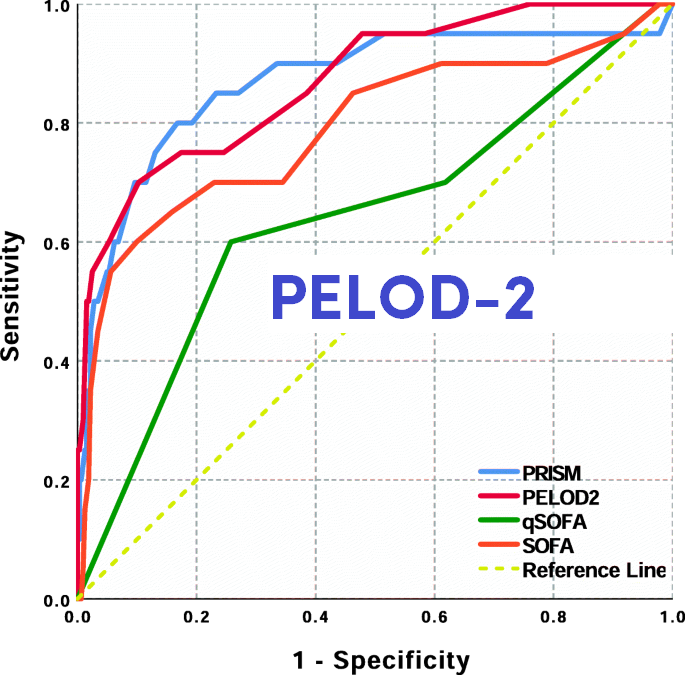PELOD-2 score predicts mortality in patients admitted to the intensive care unit at Hospital Baca Ortiz from March to Au-gust 2018. Observational Study / Diagnostic tests
Main Article Content
Abstract
Introduction: Multiorgan dysfunction syndrome (MODS) is a failure of two or more organs in critically ill patients, and scores have been created to estimate mortality in these patients. The aim of the present study was to determine the diagnostic value of the Pediatric Logistic Organ Dysfunction-2 (PELOD-2) scale to predict mortality in patients who were admitted to the intensive care unit (ICU) at the Hospital Baca Ortiz.
Methods: This analytical observational study was conducted in the ICU at the Hospital Pediátrico Baca Ortiz, Quito, Ecuador from March to August 2018. All possible analyzable cases were included, and they were divided into the following groups: Group 1 (G1), deceased children; and Group 2 (G2), surviving children. Analyzed variables were gestational age, sex, clinical variables of the PELOD-2 score, and mortality. The sensitivity (S), specificity (S), positive predictive value (PPV), and negative predictive value (NPV) were calculated for each score.
Results: There were 188 cases included. There were 97 females (51.6%) and 66/188 patients aged 1 to 4 years (35.1%). There were 100/188 cases with respiratory failure (53.7%) and 35/188 patients died (18.6%; 95% confidence interval [CI] 18.21–19.02%). PELOD-2 ≥16 was associated with 63% mortality (OR 511.7, 95% CI 29.4–8909; P <0.0001). Additionally, S was 62.9%, E was 100%, PPV was 100%, NPV was 92.2%, and accuracy was 93.1%.
Conclusion: The PELOD-2 score is an acceptable, highly specific predictor of mortality.
Downloads
Article Details

This work is licensed under a Creative Commons Attribution-NonCommercial 4.0 International License.

